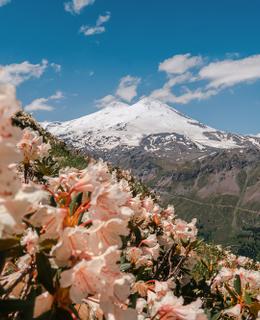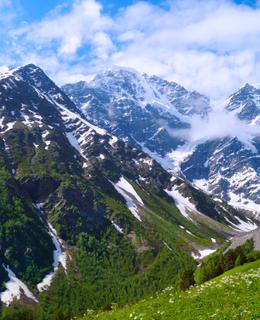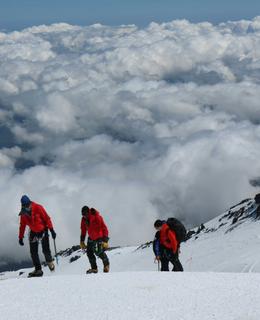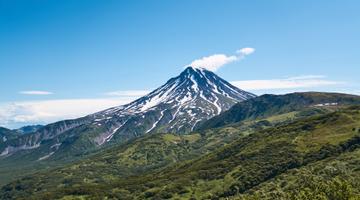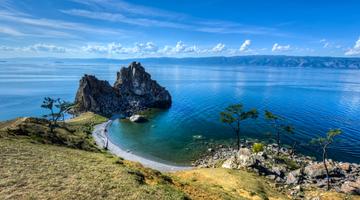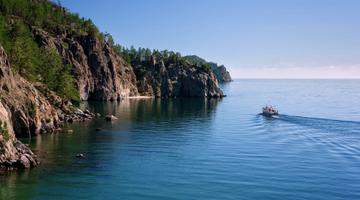Location, Climate, and Features
Mount Elbrus is located in the heart of the Caucasus Mountains, on the border between Karachay-Cherkessia and Kabardino-Balkaria. The mountain has two summits: the Eastern Summit (5,621 meters) and the Western Summit (5,642 meters). The height of Elbrus above sea level is typically measured from the Western Summit. Both peaks are covered with perpetual snow year-round, earning Elbrus its nickname as the "gray-haired" mountain, which refers not only to its snowy cap but also to its ancient age. Additionally, the name "Elbrus" originates from the Turkic word "alburoz," meaning "white mountain."
Elbrus is estimated to be around 2-3 million years old. The dormant stratovolcano last erupted over two thousand years ago, making it safe for recreational, tourist, and sporting activities. The stunning natural beauty of the Elbrus region has been protected for many years by a National Park, whose mission is to preserve and enhance the natural treasures of this area.
The climate of the Elbrus region is shaped by its mountainous terrain, with weather patterns cycling between sunny and stormy days. Summers here are cool and humid, autumn arrives earlier than usual, and by October, deep snow blankets areas above 3,000 meters. On the southern side of the mountain, along the Baksan Valley, there are numerous tourist bases, campsites, and hotels. A paved road leads to the Azau Plateau, the starting point for ski lifts. Mountaineering and skiing are the primary pursuits of visitors to Elbrus.
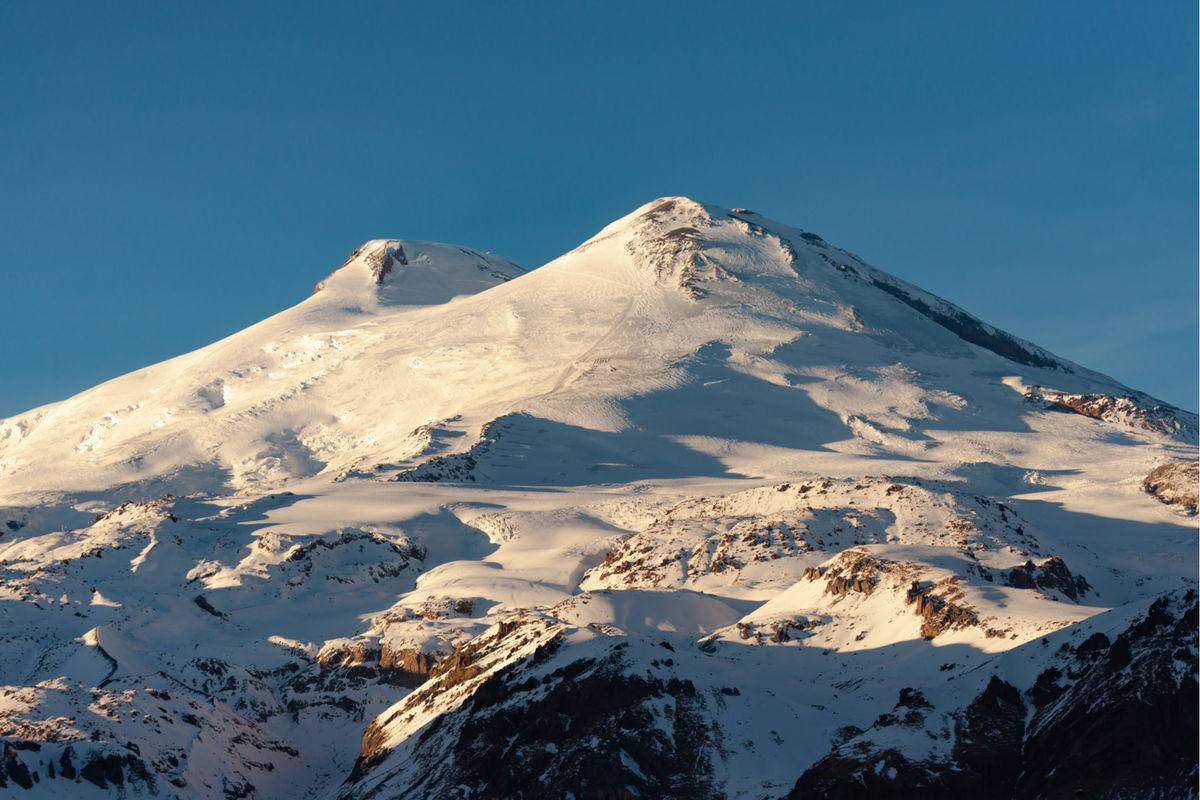
The History of Ascents
For a long time, Elbrus remained unconquered, although attempts to reach its summit had been made since the second half of the 18th century. Local residents, who knew every stone in the area, avoided climbing above the alpine meadows out of respect for the sacred mountain. The first successful expedition to conquer Elbrus was led by General Georgy Emmanuel. In the summer of 1829, a group of climbers set out to ascend the Eastern peak of Elbrus from the northern slope. Despite being led by a military commander, the group’s mission was entirely peaceful. The expedition, organized with the support of the Russian Academy of Sciences, included people of various nationalities and professions. In the end, only one person reached the summit: a Kabardian named Khilar Khashirov, who marked his achievement by firing three rifle shots. Three other members of the expedition surpassed the 5,000-meter mark, while the rest stopped at lower altitudes. The group’s ascent became a landmark event in the history of mountaineering. After the expedition, General Emmanuel was awarded the title of Honorary Member of the Academy of Sciences. A meadow in the Kyzylkol River valley, located at 2,450 meters, was named after him. Today, this spacious area, measuring 1.5 by 2 kilometers, serves as a base camp for climbers, offering essential mountaineering equipment and comfortable rest facilities. Forty years after Emmanuel’s expedition, an English team set out to conquer the Eastern peak from the southern side. Its leader, Douglas Freshfield, a member of the British Alpine Club, called the Caucasus "the great passion of his life." He was the one who expanded European mountaineering beyond the Alps. In mid-July 1868, the British climbers, accompanied by Balkar guides, ascended the Eastern peak from the south. This route is considered easier than the northern approach. Inspired by their success, the British returned six years later to climb the Western peak. From then on, climbers began not only conquering peaks but also competing in speed and other non-traditional challenges. Ascents were no longer limited to summer; winter climbs became popular, and women joined the ranks of mountaineers. By the end of the 19th century, the first speed ascent of the Western peak was recorded, taking just 8 hours, followed by the first ski ascent of the majestic mountain. Unfortunately, ascents of Elbrus have not been without tragedy. In the mid-1930s, eight climbers fell to their deaths while descending the mountain. Half a century later, under unclear circumstances, five members of a Moscow tourist club perished while attempting to climb the Western peak. In 1990, severe weather claimed the lives of six climbers, including two foreigners, and two years later, two climbers from St. Petersburg fell from a snowy slope. The number of solo climbers who have lost their lives is countless. Nevertheless, these stories do not deter those who have dedicated their lives to mountaineering. The turn of the millennium brought new achievements in the conquest of Elbrus. Thanks to advancements in technology, modern equipment, and improved infrastructure, the mountain has become more accessible to a wider range of people. Climbers now parachute from the summit and descend on paragliders. Wheelchair users and elderly mountaineers have also reached the top. Each year, interest in climbing Elbrus grows, and its history continues to be enriched with new and fascinating stories.
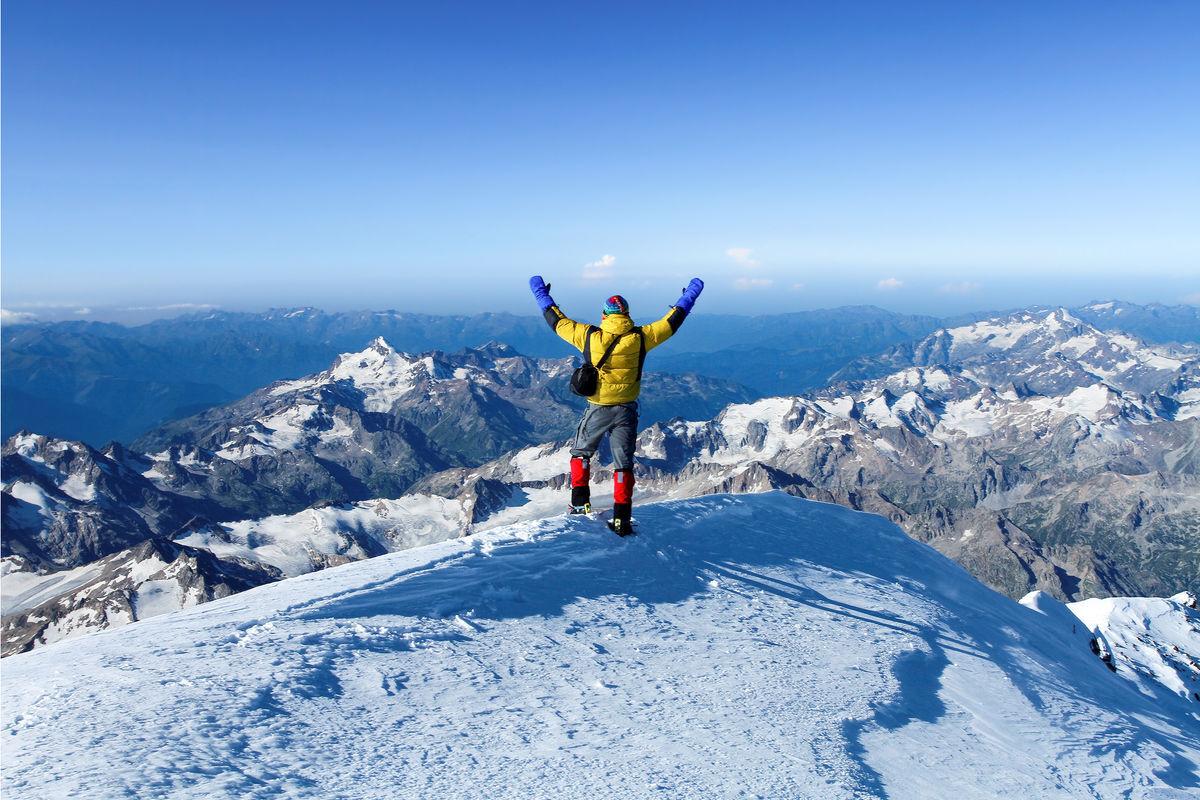
Climbing Routes
There are four main routes to reach the summits of Elbrus. Among these, some are not recommended for beginners due to their difficulty and technical challenges.
Southern Route
The southern ascent is the classic and most well-developed route, making it the most comfortable option. It is the best choice for those attempting to climb Elbrus for the first time. With moderate fitness, reaching the summit takes about 7-8 hours, while the descent takes half that time. Along the way, there are several rest stops, and the path leads through the Pastukhov Rocks. A cable car runs up to 4,055 meters, where the famous "Priyut 11" (Refuge 11) is located. Climbers can start their ascent from various points along the route. For those who prefer, a snowcat can take them up to the 5,000-meter mark, though this significantly reduces the physical challenge and may not allow enough time for proper acclimatization. To adapt to the altitude, beginners often spend their first few days in the village of Terskol, making several trips up to 3,000 meters before returning to their hotels.
Northern Route
The northern path, also known as the Emmanuel Route, is less comfortable and more technically challenging but incredibly scenic. There is no cable car here, and until recently, this route was considered wild and unsuitable for beginners. However, today, a well-maintained road leads to the Emmanuel Meadow, where a comfortable base camp offers rest and acclimatization opportunities. Due to its improved accessibility, the camp now attracts not only climbers but also regular tourists from nearby Pyatigorsk, who come to enjoy the natural beauty. Above the meadow lies the Djily-Su Plateau, nicknamed the "German Airfield," and at 3,800 meters, the Northern Shelter is located. The path to the shelter winds through stunning natural landscapes. From the Northern Shelter, climbers face a choice: they can head to either the Eastern or Western peak, though most groups opt for the Eastern summit.
Western Route
The western route is not for beginners. It is the shortest in distance but also the most challenging. Climbers face massive ice fields, vertical cliffs, and a complete lack of established paths. The remoteness and absence of mobile signal make it extremely difficult to call for help if needed. The first base camp is at 3,500 meters, and the second is 700 meters higher. The path leads across loose scree and icy slopes, and the weather in this part of Elbrus is highly unpredictable, often turning severe for extended periods. This route was only opened in 2007 and is used exclusively by experienced expeditions. Participants must be in excellent physical condition and hold mountaineering qualifications.
Eastern Route
The most unusual route to Elbrus begins on the eastern side, starting from the village of the same name. The path follows the Irik-Chat Gorge, passing an open glacier and then a frozen lava flow. The route is logical and predictable, with few natural hazards, but it is rarely used. There is no mobile signal here, rescue teams rarely visit, and obtaining help in an emergency is extremely difficult. If something goes wrong, help may not arrive for at least 24 hours. However, the route offers incredible, untouched natural beauty, free from the crowds and infrastructure found on other paths.
Traverse Routes
In recent years, traversing routes have gained popularity on Elbrus. These involve ascending from one side and descending from the other. Traverses are advantageous because they allow climbers to see more of Elbrus’s landmarks in a single trip. The most common traverse is from south to north. The ascent is more challenging, so it usually follows the more comfortable southern route. The descent, however, takes significantly less time, allowing climbers to leisurely make their way down the northern slope, surrounded by pristine nature and breathtaking mountain views.
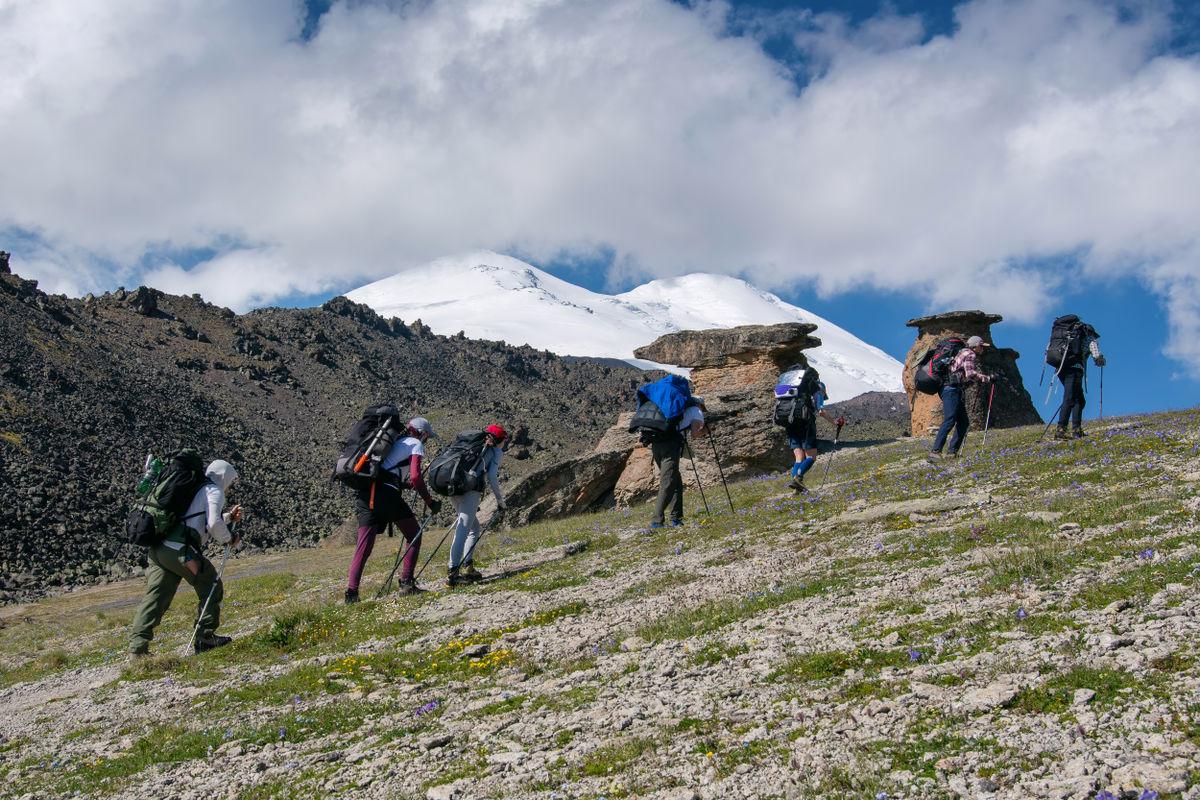
Elbrus as a Ski Destination
It was in the Elbrus region that the country’s first chairlift was built in the mid-20th century, marking the development of a ski resort. The first cable car led to the neighboring Mount Cheget. The name "Cheget" translates from Balkar as "in the shadow," implying Elbrus’s dominance over Cheget. However, Cheget is no less impressive as a ski destination and even surpasses Elbrus in some aspects. By the late 1960s, when the first cable car, Azau-Krugozor, was built on Elbrus, Cheget already had two operational ski lifts, with a third one under construction.
The first line of the Elbrus cable car was 1.74 kilometers long. The second stage, added seven years later, extended another 1.8 kilometers to the Mir station. The cherry on top was a kilometer-long chairlift that took skiers to the Gara-Bashi station, located at 3,800 meters. For forty years, athletes and ski enthusiasts used these three cable cars on Elbrus. At the beginning of the new millennium, two modern gondola lifts were built parallel to the old ones. Just before 2016, a third gondola line was completed, reaching the Gara-Bashi station and making the Elbrus cable car system the second-highest in Europe.
The Azau Glade, situated at 2,350 meters, is the heart of Elbrus’s ski resort. This is where the history of the ski slopes began, where the first tourist bases were established, and where ski services started to develop. Today, Azau offers a full range of activities, from comfortable hotels to trekking, horseback riding, skiing, snowboarding, and exploring natural landmarks. Visitors can enjoy a wide variety of services and entertainment, making it a perfect destination for both adventure seekers and those looking for a relaxing getaway.
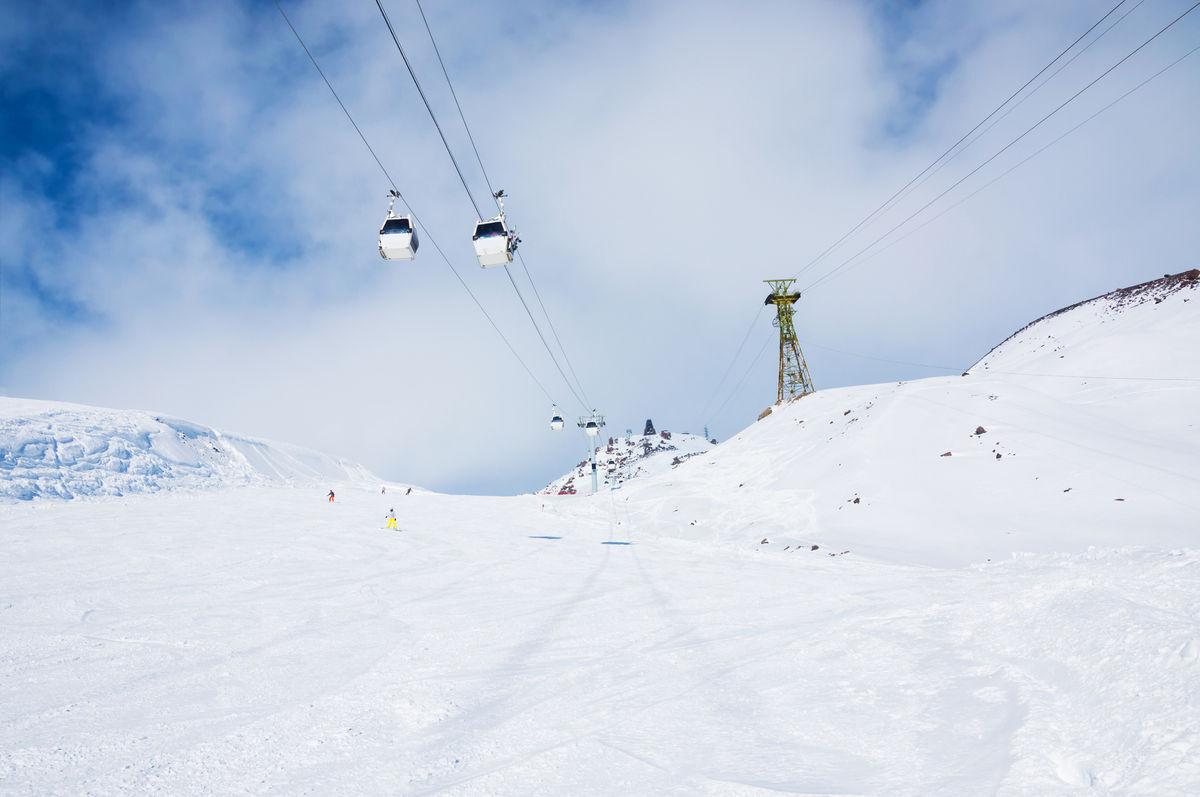
Flora and Fauna
In the mid-1980s, the Elbrus National Park was established in the region. This remarkable region features a striking variety of terrain, where deep valleys give way to rugged cliffs, and dense coniferous forests transition into alpine meadows and high-mountain tundras, home to rare and ancient plant species. The park is a biodiversity hotspot, home to around 3,000 species of higher vascular plants, which is roughly half of all such species found in the Caucasus. Among the endemic plants are several species listed in the Red Book, with particular protection given to the Caucasian rhododendron—an evergreen shrub crowned with stunning white blossoms.
The National Park is also a sanctuary for wildlife, including roe deer, bears, martens, and gray partridges. Above the peaks, predatory birds such as golden eagles, falcons, and hawks soar gracefully. High in the mountains, you can find the agile chamois, while the crystal-clear lakes are home to brook trout. One of the park’s most treasured inhabitants is the endemic West Caucasian tur, a species of mountain goat whose habitat is shrinking each year due to human impact.
Things to See on Mount Elbrus
The Elbrus region is so rich in stunning natural attractions that one trip might not be enough to explore all its wonders. In any case, you should try to see as much as possible—organized tours with a variety of trekking routes through the National Park can help you make the most of your visit.
Dzhily-Su Gorge hides healing hot springs among its rocky cliffs. Hundreds of tourists come here daily for the revitalizing waters. Travelers get to enjoy both the journey and the destination—the winding road snakes through picturesque cliffs and bottomless canyons, offering breathtaking views of Mount Elbrus. In addition to the springs, the gorge is home to several waterfalls, including the 40-meter Sultan-Su, whose powerful, steady stream cascades from a rocky crevice.
The "Maiden’s Braids" Waterfall, located in the Baksan Gorge, is one of the most beautiful waterfalls in Russia. The stream, which fans out as it falls from a gently sloping rock, spans up to 15 meters in width. The crystal-clear water flows like a sheer curtain over the ledge, resembling the loose hair of a young mountain girl. This effect is made possible by the exceptionally hard basalt rocks, which resist erosion, forcing the water to spread out dramatically across the surface, delighting visitors.
The Blue Lakes, like a necklace of five pearl beads, descend from the mountains to the valley of the Cherek Balkarsky River. These karst sinkholes filled with water thousands of years ago. The four upper lakes—two Upper Blue Lakes, Secret Lake, and Dry Lake—are interconnected like vessels. The latter mysteriously lost its water, leaving only a small pool of unreal blue at the bottom of a massive sinkhole. The Lower Blue Lake, the most famous among tourists, stands apart from the others. It has no fish due to its high sulfur content, and its water changes color with the seasons, shifting from sky blue to turquoise and azure.
The Valley of Narzans, with its two dozen mineral springs, stretches along the Khasaut River for about a kilometer. The highly mineralized water gushes forcefully from the springs, with the largest one resembling a bubbling cauldron, even though the water temperature never exceeds 9-10°C (48-50°F). Due to its high iron content, the mineral water in the Valley of Narzans has a unique color—flowing in rusty streams, it tints the coastal grass and rocks with a reddish hue.
The Cherek Gorge is a half-kilometer canyon where the mountain river churns and foams between towering cliffs. The gorge is awe-inspiring in its scale and natural power. The formidable cliffs are so massive that the thin ribbon of the winding road at their base is barely visible. Until the end of the last century, when a tunnel was carved into the rocks for vehicles, a footpath was the only link between the village of Verkhnyaya Balkaria and the outside world. The gorge was once part of the Silk Road, and the village still preserves ancient burial crypts and a 400-year-old watchtower belonging to the Abaev princes.
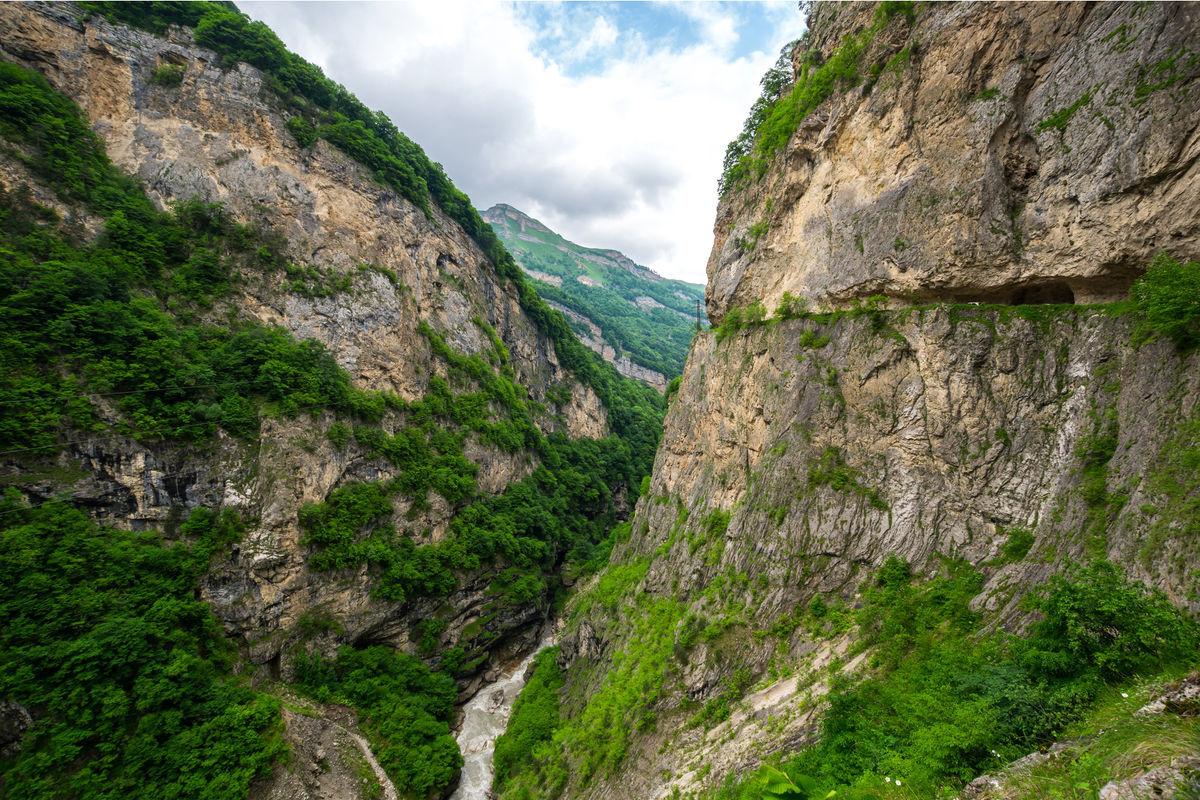
Myths and Legends of Mount Elbrus
Like most ancient mountains, the gray-haired Elbrus is shrouded in numerous legends. These age-old tales have been passed down through generations among the peoples of the Caucasus.
Elbrus, Kazbek, and Mashuk
One of the most famous legends tells of how Elbrus came to be. Long ago, two mighty warriors—Elbrus and Kazbek—lived in these lands. Elbrus was older, taller, and wiser, and the bold Kazbek always learned patience and restraint from him. The two warriors lived as strong, agile, and brave companions, always ready to help each other. But then the unthinkable happened: they fell in love with the same girl. Nearby lived a young green-eyed mountain maiden named Mashuk, whose beauty lit up the steppes and valleys like the morning star. When the warriors realized their hearts belonged to the same girl, they asked Mashuk to choose between them. In response, the beauty only laughed, her laughter echoing like pearls in the mountain air. Elbrus and Kazbek grew distant, their friendship strained. Time passed, and the hot-headed Kazbek challenged Elbrus to a duel—the winner would claim Mashuk. Early in the morning, the warriors went to the valley, their swords sheathed. The wise Elbrus fought with restraint, but Kazbek’s blade grew fiercer. When Mashuk learned of the duel, she rushed to the valley, but it was too late. She found Kazbek standing over Elbrus’s lifeless body, frozen in grief. The heartbroken maiden wept so bitterly that her cries reached the heavens. Seeing what had happened, the Almighty declared, “You shall become the three peaks of the Caucasus, beautiful and majestic, but always separated by valleys and passes.” And so, in what is now Kabardino-Balkaria, the gray Elbrus rose with its split peak, while proud Kazbek stands at the border of Russia and Georgia. Near Pyatigorsk, you can see Mount Mashuk, its summit covered in emerald green—just like the eyes of the young maiden.
Elbrus and Noah
Another legend tells of Elbrus’s twin peaks. The Balkars and Kabardians believe that Elbrus has existed since the dawn of creation, though it originally had only one peak. When the Great Flood came, the massive mountain was completely surrounded by water, with only its summit defiantly piercing the surface. Exhausted from his journey, Noah sought refuge on the majestic mountain, but Elbrus silently refused, shrouding itself in fog as the ark approached. Enraged, Noah pressed forward, and his massive vessel split the mountain’s peak in two as it passed through the fog. After sailing through the cleft, Noah turned and declared, “Your peaks shall forever be covered in eternal cold and ice, even if the rest of the world is filled with blooming flowers and fragrant roses.” Noah’s ark found refuge under the benevolent Mount Ararat, while Elbrus remained with its twin peaks, eternally cloaked in snow.
The Maiden of Elbrus and the Black Climber
No mountain is complete without its share of eerie tales, and Elbrus is no exception. Experienced climbers love to share these stories in mountain shelters, watching as newcomers nervously zip up their sleeping bags and inch away from the tent entrance.
One such tale is that of the Maiden of Elbrus. In the early 20th century, a group of tourists arrived in a foothill village seeking a guide. All the men were away hunting, so a young shepherd who had never ventured beyond the mountain pastures volunteered. The elders warned him against it, and his fiancée pleaded with him not to go, but he insisted. The weather was clear, and the group made good progress at first. But the Caucasus mountains are treacherous—within half an hour, the sky darkened, a cold wind blew, and snow began to fall. The terrified tourists turned back, but the shepherd pressed on, considering retreat a disgrace. The next day, his body was found at the bottom of a gorge. His grieving fiancée begged the heavens not to separate her from her beloved, and the Almighty transformed her into a mountain spirit. For years, the Maiden of Elbrus has sought revenge for her lover’s death, luring climbers off their paths and leading them to their doom. Survivors claim she roams the mountains naked and barefoot, her snow-white body and long black hair veiled in a silver mist. Instead of fingers, she has metal climbing hooks, and her large brown eyes radiate a chilling cold.
Then there’s the legend of the Black Climber, a ghost so widely believed in that climbers often leave food for him in shelters. Some say he was a lost mountaineer who perished in the mountains. Dressed in a black jumpsuit, he visits tourist camps in search of bread. Many consider him a benevolent spirit who helps those in trouble. Skeptics, however, tell a less romantic tale: they believe the Black Climber was betrayed by his friend during a love triangle. The friend cut his rope, eliminating his rival. Now, the ghost searches endlessly for his betrayer, peeking into every shelter and tent in his quest for vengeance.
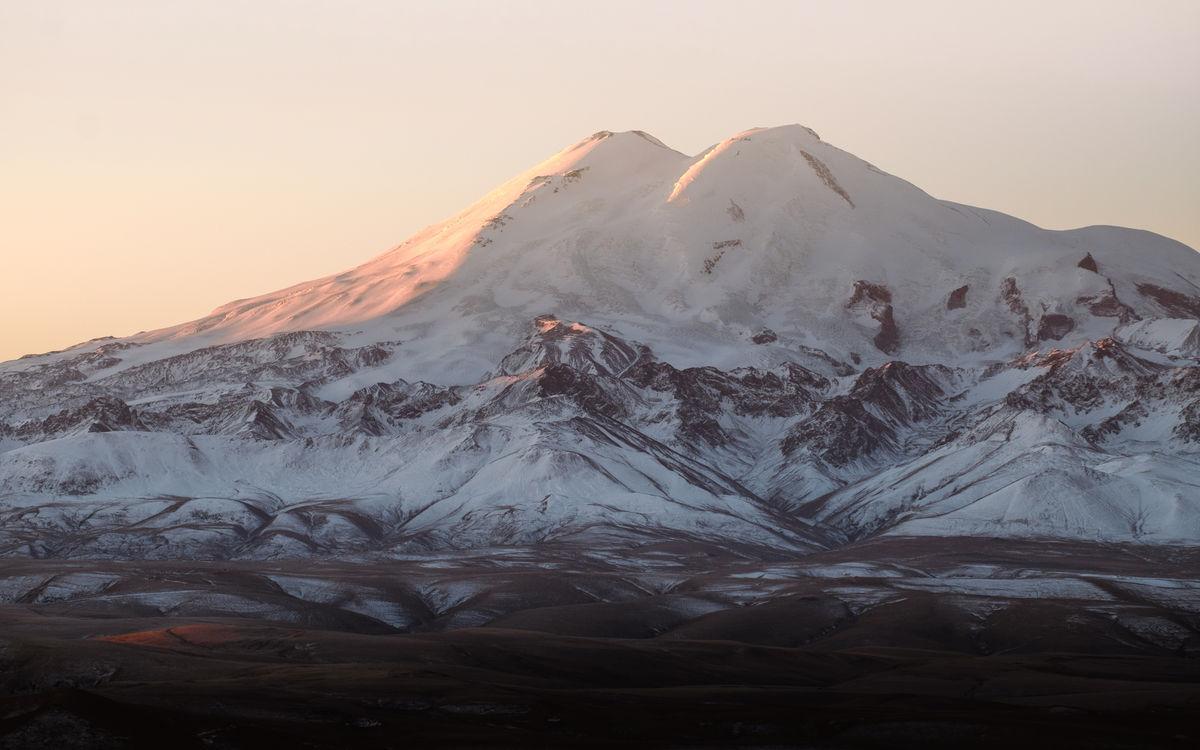
Tips for Tourists
Even if you’re not planning to conquer the peaks of Mount Elbrus and are simply heading out to explore the gorges and enjoy the unparalleled beauty of the Caucasus, there are a few essential items you’ll need to bring along:
Seasonal hiking footwear. No matter the time of year, your shoes should be waterproof, durable, and comfortable, as you won’t be walking on paved roads or tiled sidewalks. Even in warm weather, you’ll encounter wet ground near lakes and waterfalls, and you may hike up to glaciers. A pair of wool socks will be a great addition to your warm footwear.
Waterproof outerwear and warm clothing. The same rule applies to your clothing. Even in summer, warm sweatpants, sweaters, and hooded windbreakers are a must alongside comfortable shorts and T-shirts—evenings and nights on Elbrus are chilly year-round. In winter, season-appropriate gear is doubly important: the saying “you can never be too warm” holds true in the mountains.
Medications and repellents. It’s true that there are almost no mosquitoes in the mountains. However, in the wilderness, you may still encounter other insects that can be just as bothersome. Your travel first-aid kit should include broad-spectrum repellents, antihistamines, antiseptics, hemostatic agents, cotton wool, bandages, and plasters.
A map and compass. Many people have become so reliant on GPS and navigation apps that they’ve forgotten how to navigate without them—a big mistake. In the mountains, mobile service and internet access are often unavailable. If you decide to wander off without a guide or accidentally fall behind your group, a map and basic navigation tools will be your best friends.
And most importantly: If you do plan to conquer Elbrus’s peaks, trekking routes with minimal elevation changes are an excellent way to acclimatize to the high-altitude environment.
How to Get to Mount Elbrus
The Elbrus region is located about 200 kilometers from the major international hub of Mineralnye Vody, where planes from Russia’s largest airlines land one after another. Even closer is the airport in Nalchik, the capital of Kabardino-Balkaria, though it has far fewer flights. From either airport, you can arrange a transfer to the nearby villages at the foot of Elbrus or head straight to the ski resort. From Nalchik, marshrutkas (minibuses) run to the villages of Terskol and Tyrnyauz. If you’re not in a hurry and prefer the steady rhythm of a train journey to flying, you can take a train to the cities closest to Elbrus: Nalchik, Pyatigorsk, Yessentuki, or Mineralnye Vody.
Why not make a trip to Elbrus your next adventure—a journey to new places and unforgettable experiences? Dreams do come true, and the twin snow-capped peaks of Elbrus will forever stir the hearts of those lucky enough to see them in person.




